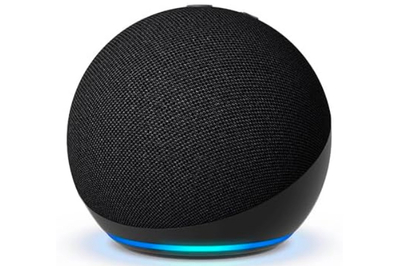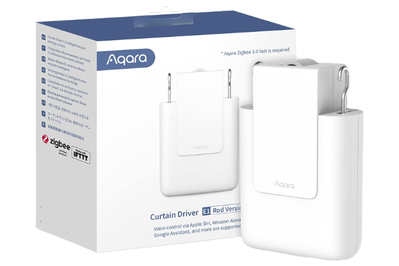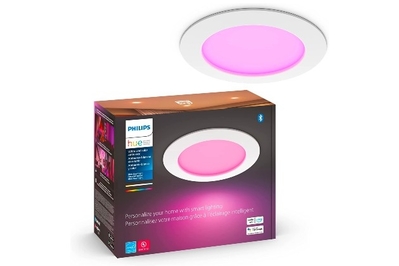This is the real and true story of how one man—call him an editor, call him a hero, it really doesn’t matter—assembled a crack team of gadgetry and transformed his family’s once torturous, soul-sapping morning routine into one that is pretty passable most days. (If you have teens and tweens, this is a high-water mark.)
As the old chestnut goes, when you have a hammer, every problem looks like a nail. And as a smart-home editor, when someone presents me with a problem, I get Beautiful Mind–style fantasies about all sorts of tech fixes. If your cursor is beelining to the close button of your web browser, just wait—gimme, like, 30 seconds!
I get it: Techno-zealotry is exhausting, and people’s addiction to their gadgets is A Problem. Devices can be cold, inhuman, and brutal. And yes, the robots are definitely prepping for world domination. But I submit that, as with any good tool, there is good gadgetry, and when it’s put to use solving human problems, it’s as viable as any other option. It’s the solution that matters.
Which brings me to my particular collection of nails in need of a hammer. My daughter struggled to fall asleep, and so was a total monster when dragged from slumber in the morning. My son slept like it was his job, but was a total monster when dragged from slumber in the morning. My wife, well, she’s a total delight when dragged from slumber in the morning. And me, I was the dragger-in-chief, a latter-day Sisyphus fated to repeat the same inane daily ritual.
And then I found a decent cure. It came from some modest savvy and a small collection of smart-home devices: an Ecobee Smart Thermostat Enhanced with temperature sensors, a trio of Amazon Echo smart speakers, a pair of IKEA smart shades, an Aqara Curtain Driver E1, and a Philips Hue White and Color Ambiance Slim Downlight.
Top pick
Runner-up
Here’s how that seemingly random assortment of tech comes together to relieve what felt like an emotional mosh pit every morning.
Over the course of covering smart-home tech for the past decade, I’ve learned that people tend to sleep better in cooler temperatures, around the mid-60s. Our heating system consists of a single zone with the thermostat in the hallway, which makes it hard for us to balance the temperature across three bedrooms.

That’s where the Ecobee Smart Thermostat Enhanced fits in. Besides making our system more efficient and less expensive to run, it allowed me to add a little remote temperature sensor in each room so that it could average (or prioritize) the temperatures in all the rooms, rather than just running until my hallway was the correct temperature.

The trio of Amazon Echo Dot speakers (of various generations) were initially alarm clock radio replacements—where I live, radio signals are half static. Smart speakers make it easy to set an alarm. I just say “Alexa, set an alarm for 6:45 a.m. weekdays and play NPR.” My kids can swap to music if they like, and I set the radio to fade in slowly rather than turning on at full volume instantly.
My restless daughter typically read at night, but we found that it kept her stimulated, as did listening to books on tape or music. She has since discovered the endless variety of ambient-noise tracks on Spotify, which help empty her mind, and so now she calls up light rain sounds via her Echo Dot, asks Alexa to turn it off in two hours, and she’s good.
After installing IKEA Fyrtur smart shades in our kitchen, I put a set in each of my kids’ rooms (alas, this model is now discontinued, but any of Wirecutter’s other smart shade picks would work the same). Every weekday they automatically rise a few minutes before the morning alarm turns on, letting in a peek of sunlight.
If you don’t have windows that face the sun, or the budget to accommodate smart blinds, you can instead opt for smart lighting, which can do a nice job of imitating the warmth of sunrise. In my son’s room, a Philips Hue White and Color Ambiance Slim Downlight gradually turns on to a cozy warm color a few minutes after his Echo Dot turns on.
In my room, I recently installed an Aqara Curtain Driver E1, a device that automatically pulls open one of the curtains in a bay window (the one that doesn’t face the neighbors). I can open or close it by hand, through an app, or on a schedule. It’s a little noisier than I expected, which would be fine in a living room but is a little jarring in the morning, so I have the radio turn on first to mask the sound.
This assembly came together and has evolved over time, and to be abundantly clear, I don’t think any of these devices are essential.
Although they aren’t luxuries per se—the speakers were around $35 each on sale, the shades were $300 total, the thermostat was a couple hundred but has already paid for itself in rebates and savings—they are certainly conveniences. But they’re conveniences that we have come to depend on and enjoy, and for our urban household, they provide a meaningful way to offset what is otherwise an often hectic pace.
If you can get over the notion of having yet another gadget, I say give tech a chance.
This article was edited by Megan Beauchamp and Courtney Schley.







